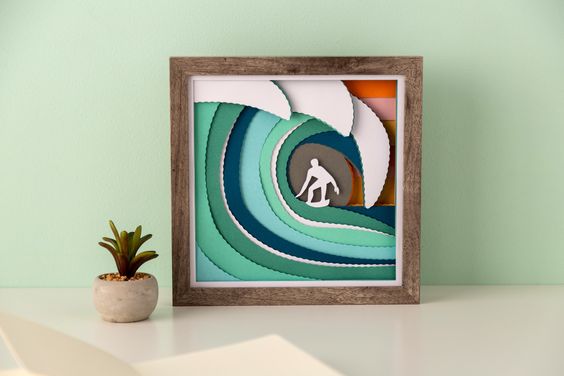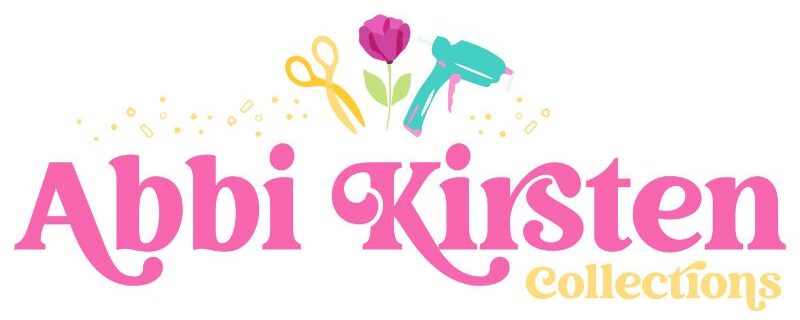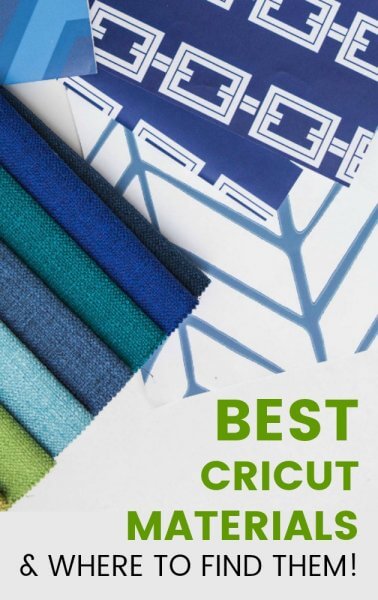
It’s pretty widely known that Cricut machines can cut materials like vinyl and paper. But do you know that these little powerhouses can cut so much more than that?! I’m talking about everything from wood to types of plastic and fabrics!
Maybe you are familiar with what the machine can cut but struggle to find these Cricut materials in craft stores and wish you knew where to look online.
Some of these Cricut materials can be used with more than one blade – Cricut blades are so versatile! If you are relatively new to Cricut, you might just be surprised at what it can cut!
I will tell you that when it comes to sorting out where to buy the wide variety of Cricut materials that can be used for your projects, you are best to avoid main steam craft stores, especially if you want to save money—most craft stores price things, like vinyl and leather 2x higher for half the amount.
So let’s dive into all the Cricut materials!
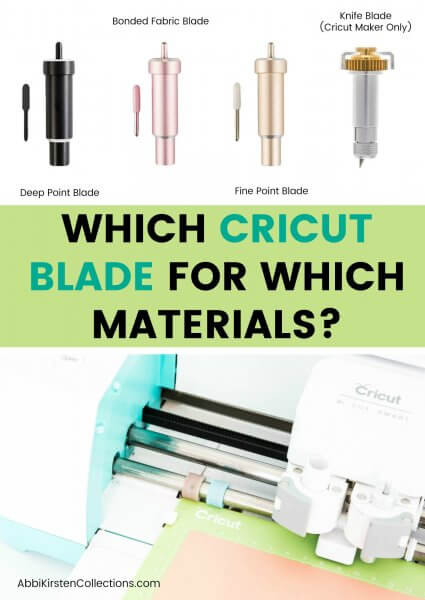
Cricut Materials that can be used with the Fine-point blade
The materials listed in the section below all work well with the fine-point Cricut blade. Easily adjust the pre-labeled settings on the dial for Explore Air 2 machines or in Design Space material settings for all other machines. I will also note the settings below.
Iron-on vinyl
Iron-on vinyl is predominantly used on things that are fabric-based in some way, such as t-shirts, totes, cloth napkins, etc. Check out a board full of ideas here!
For iron-on vinyl, be sure to use the iron-on setting on your Cricut.

Iron-on vinyl (a.k.a heat transfer vinyl or HTV) is an absolute favorite for most Cricut users and works well with a fine-point blade, but what are some of the very best iron-on vinyl to use?
- Siser Heat Transfer Vinyl – Easy to weed and they have been around for a long time! Siser also has glitter vinyl options, patterned vinyl, floral patterns as well as holographic options! Shop them all on the Sister and Orajet Amazon result page!

- Cricut Heat Transfer Vinyl – Cricut’s vinyl is great because they are made for Cricut and by Cricut. They also offer a wide variety of colors and textures, like glitter.
- My Vinyl Direct – Vinyl Direct has a lot more than just HTV, so I will point you back to it more than once. They have plenty of patterns, colors, and textures to shop for!

- Firefly Heat Transfer Vinyl – Firefly is a widely known and trusted brand. Not only does it have great reviews but they also have a fantastic selection! And if you are looking for great fuzzy flocked vinyl or glitter vinyl they have you covered!
- Fame Heat Transfer Vinyl – This brand is great when you are hunting for a wide selection of colors. The other benefit of Fame Crafts is that it is cheaper than some alternatives if you are on a budget!

Mat to use: Generally, the standard grip mat will work with all types of vinyl.
Adhesive Vinyl – Use Vinyl Setting
Adhesive vinyl is a close favorite to the HTV. There are countless uses for adhesive vinyl, such as wall decals, mugs, ornaments, containers, wall art, etc. Here are some of the best brands below for AV!
There are two categories of adhesive vinyl – permanent outdoor and removable indoor – with various types within each category. Vinyl will always be clarified as one of those types, and you should use it accordingly to the project for best results.
For example, removable adhesive vinyl would work excellent as a removable wall decal, while permanent vinyl will work better for a wood sign you plan to hang on your front door.
For adhesive vinyl, you will generally use the vinyl setting on your Cricut.
- Oracal Vinyl – This vinyl is my personal top choice when I am thinking about starting an adhesive vinyl project. Oracle is regarded as the industry leader when it comes to craft vinyl. This vinyl is designed to last years. You can also find rolls of this on Vinyl Direct here in both glossy and matte!
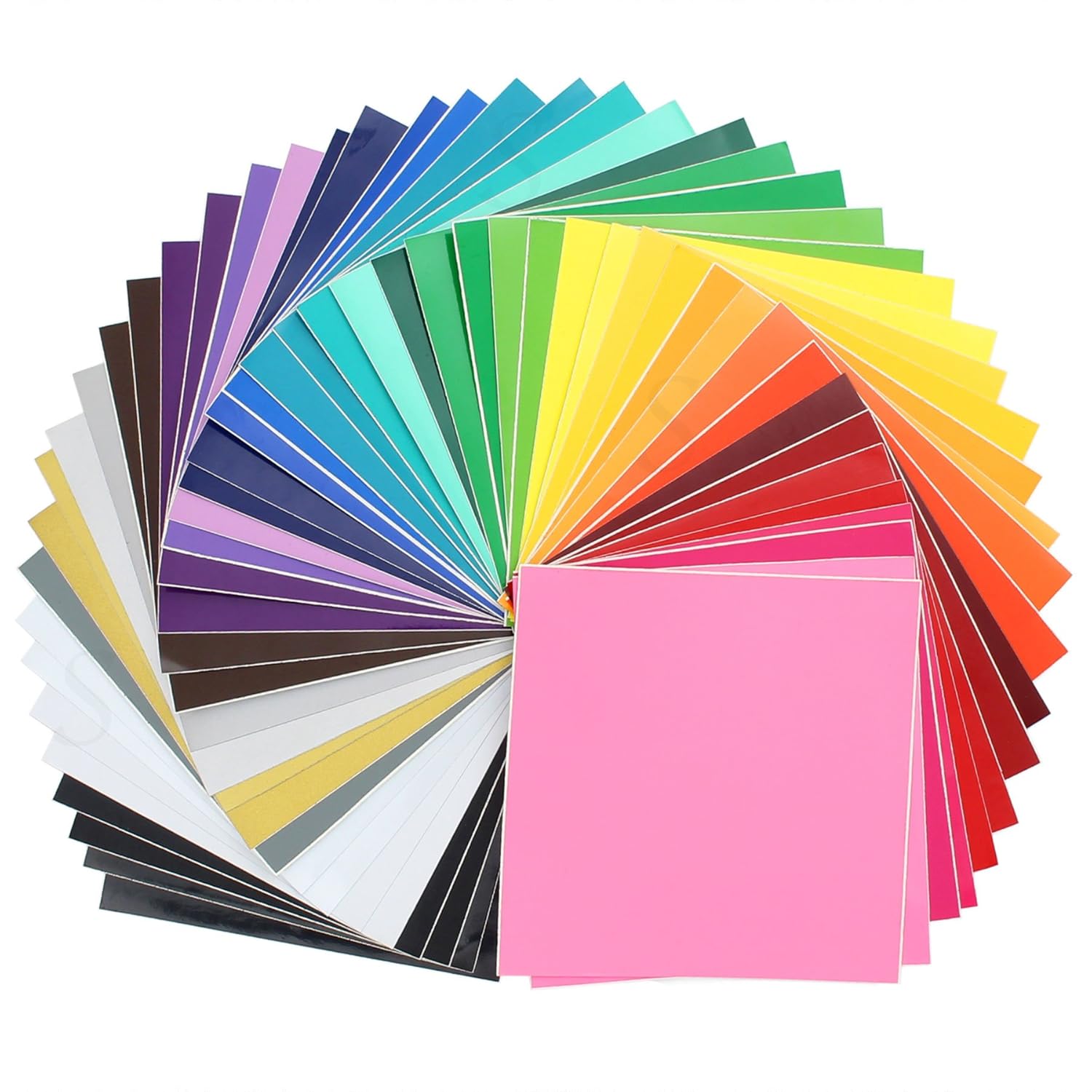
- Cricut Adhesive Vinyl – Cricut is still a great go-to resource for AV. As a whole Cricut does tend to be more pricey BUT there are times that I find a better shade in a color I am searching for with Cricut’s vinyl.
- Expressions Vinyl – Expressions vinyl is another favorite and easy to use. They have a good color selection of glitter vinyl as well!
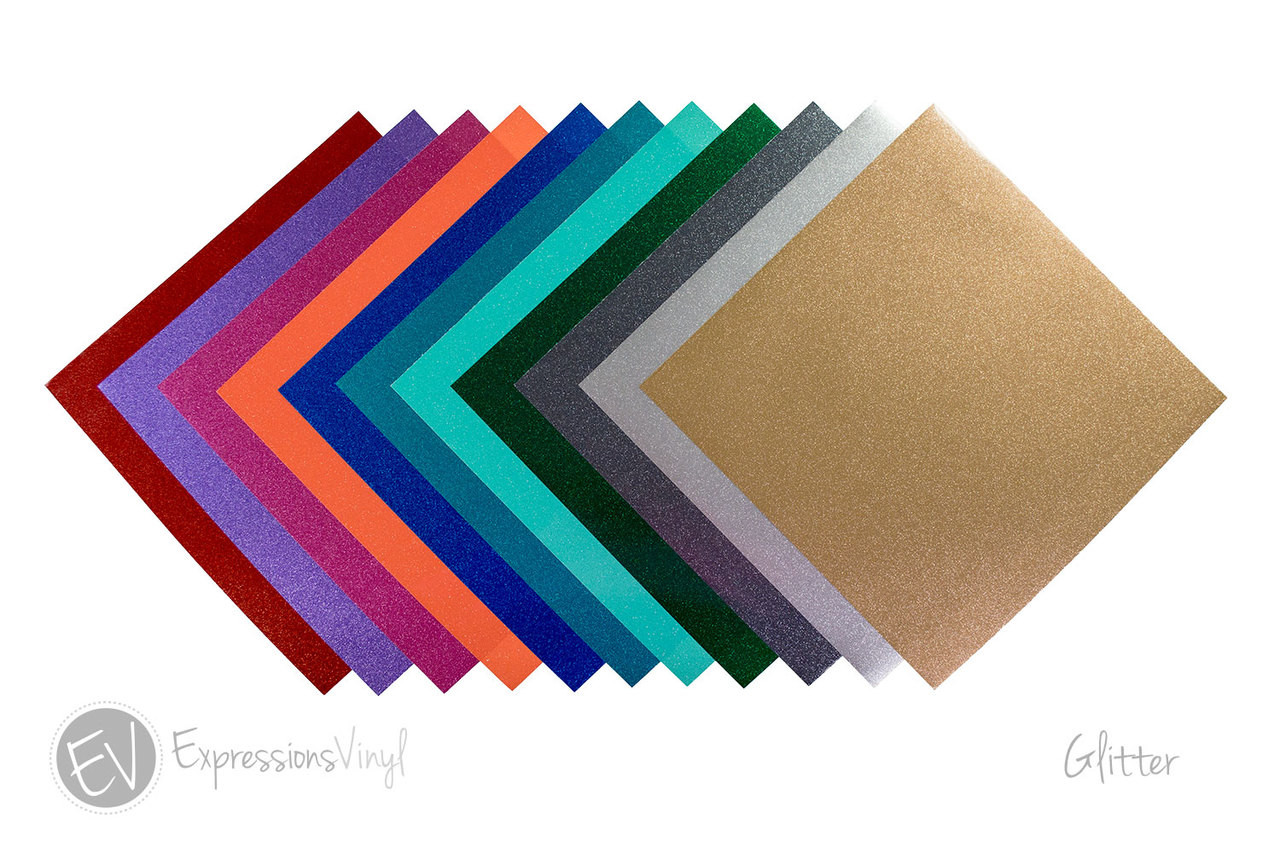
- Happy Crafters – Honestly, this is just a happy place website – you will find vinyl of all sorts and much other craft-related supplies!
Mat to use: Standard grip work as well for adhesive vinyl.
Cardstock Paper
Paper and cardstock are near and dear to me because I love to make paper flowers. You can get access to my whole library of goodies when you sign up! Click the pink button below.
But my point is that I know cardstock well. So my favorite resources are below. Read my post, “Where To Find Paper For Paper Flowers: Best Cardstock For Paper Flowers,” for a more in-depth list of paper for paper flowers.
When crafting with cardstock, set the dial to cardstock on the Explore Air 2 or use the Design Space settings to select your cardstock choice for any other machines that no longer have the dial.

- Recollections cardstock – Recollections is a brand by Michael’s craft store, but they can also be found online! I use this brand the most for my papercrafts.
- Savage Universal paper rolls – I recently discovered how wonderful Savage paper works for paper crafting. Even though it seems a little pricey upfront, it lasts so much longer!

- Cards and Pockets – This site has been with me for years and for good reason, the color options are unparalleled to most.
Mat to use for cardstock paper: Standard grip
Smart Materials

Smart Materials also work with the fine-point blade. Cricut Smart Materials have specially created materials that can be cut without using a cutting mat on the Maker 3 or Explore 3 Cricut machines.
The Cricut Joy also works with Smart Materials specific to the Joy machine. Using Smart Materials is a great way to save a little money and avoid buying tons of mats! Learn more about using Smart Materials here, specifically how to get Smart Vinyl to release from the liner!
Infusible Ink

Infusible Ink is Cricut’s version of sublimation without the need for a sublimation printer and ink. These transfer sheets can be cut out and pressed onto any sublimation-compatible blank, and they come in patterns and solid colors.
Cricut also makes Infusible Ink pens which allow you to draw/color onto copy paper and then transfer that onto a blank. You can also have your machine draw with the Infusible Ink pens!
Learn more about how to use Infusible Ink here!
Mat to use for Infusible Ink transfer sheets: Standard grip
Additional Fine-Point Blade Materials
Let’s also cover other materials that work with the fine-point blade and also the standard grip mat.
- Thin chipboard – good for wreaths or large letter or number cutouts. Set the dial to custom and select chipboard.
- Thin poster board – use for projects with backgrounds or large cutouts. The dial should be set to the poster board.
- Stencil Sheets – Create your own customer stencils with your Cricut! I generally have used the cardstock setting for stencil material but if you buy a different brand that is thicker than 6 mil, you may go up on the pressure.
- Sticker paper or tattoo paper – If you are using the print and cut feature, consider doing it on sticker or tattoo paper for a fun project. I like to cut my own planner stickers! Use the cardstock setting for these as well with the fine-point blade.
- Vellum – Vellum is just another type of paper that is usually delicate and translucent. It works great for any variety of papercrafts. For vellum, make sure to set the dial to paper or vinyl.
- Cellophane – Every now and then, I find a project I am creating needs a flexible and clear-like material – cellophane works great for that and your Cricut can cut it! Cellophane will need to be cut at the lightest setting, usually paper or the one dot before it.
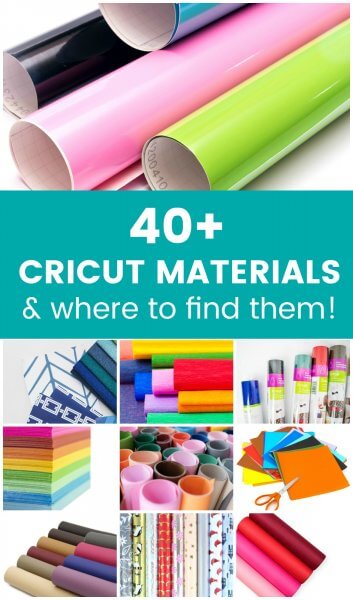
Deep-cut blade – What Can I cut?
For each of the materials below, you will want to set your dial or machine to custom and search the name of the material to select the proper cut pressure.
- Chipboard – If you need thicker chipboard than what the fine-point blade can handle, then put your deep-cut blade to work!
- Rubber – Want to make your own stamps? You totally can with this great rubber and the deep-cut blade.
- Wood veneer embellishments – You might be able to use a fine-point blade with the wood veneer if it is thin enough, but probably will want the deep blade in most cases.
- Magnets – Creating your own magnets can be really fun. A fabulous teacher appreciation gift in fact.
- Leather – Leather is all the rage right now, especially those snazzy leather earrings!
- Craft foam – Foam is especially wonderful for kids crafts. Pre-cut a bunch of fun shapes and have your kids enjoy some crafty fun time! I love this foam crown project!
- Matboard – Matboard is essentially cardboard but nicer. So any project you want to use cardboard for can work with the deep-cut blade!

- Felt sheets – Love felt flowers or crafts? Then let your Cricut do the work for you! You can also do stiffened felt sheets!
- Glitter cardstock – I love my glitter cardstock for all sorts of projects. I have cut it with the fine-point blade but the deep works better, especially with the chunky glitter paper. Craft stores often have some, or use the link I provided!
Settings: For the materials in this section, you will probably select custom for many of them and then specify in Design Space which one you are using on the cut screen. Design Space has a setting for most of these options anyway.

Mats: The fabric mat will be best for things like felt and leather. If you are cutting chipboard, glitter cardstock, wood veneer, or mat board, a standard mat will generally work fine. Rubber or magnets may require a strong grip mat.
Fabric Blade – What Can I Cut?
The fabric blade is pretty specific to fabric, and you will generally keep the fabric setting in place on the dial. Here are a few of my favorite fabric places to shop. You can also cut fabric with the two previous blades discussed, but I recommend giving the fabric’s intended blade a try!
- Spoonflower – If you want A LOT of fabric to pick from or to custom design your own fabric in a few short clicks, then Spoonflower is the way to go!
- Joann Fabrics – Many of you have probably heard of Joann’s Fabrics. They have been around a long time and some of you may have a store nearby. If you don’t, you can shop here online!
- Fabric Direct – If you want a big website full of fabric and at wholesale prices, then be sure to check out fabric direct. I have purchased velvet from them for some fall pumpkin crafts and loved it!
Mat to use: Fabric grip mat or standard grip.
Knife Blade (Cricut Maker only) – What Can I Cut?
With the knife blade (Cricut Maker only), you can cut a lot of similar Cricut materials as with the deep blade, BUT the difference is that it can cut 2-3x thicker materials than the Explore can handle! In fact, the knife blade can cut material up to 2.5mm thick! More importantly, it does it with a more accurate and clean precision cut than the deep-cut blade with Explore.

- Thick balsa wood or basswood – this material is excellent for cutting out wood frames, ornaments, or even building small objects like a birdhouse!
- Thick leather – The knife blade has been praised for how well and clean it cuts thicker leather materials. So if you want to make those snazzy leather earrings or maybe a clutch purse, then this is exciting! By the way, check out this gold leather and silver leather!

- Thick chipboard – If you want a thicker chipboard material the knife blade can take a can of that.
- Thick craft foam – Up your thickness with the knife blade with using heavier craft foams!
Mat to use: A fresh standard grip mat will work for materials thinner than 1 mm, but usually, the knife blade is used on thicker materials, so I recommend the strong grip mat. If you’re using something like 1/16 inch balsa wood, you may also need to use some painter’s tape around the edges to ensure it doesn’t slide mid-cut.
Settings: For the wood, chipboard, and leather, you can select settings to click on “view all materials” in Design Space. Craft foam usually works well on the thicker cardstock setting.
Rotary Blade (Cricut Maker only) – What Can I cut?

- Washi Sheets – Washi Sheets are awesome specialty papers. Usually, they have fun textures or prints on them. They work beautifully for cards!
- Crepe paper – Can you say easy crepe paper flowers?! Read my tutorial on cutting crepe paper!

- Cork – Cork can be delicate to cut so the rotary blade is ideal!
- Tissue paper – Cut tissue paper with too! Make sure to choose a higher-quality paper like the one linked here.
- Delicate fabrics – Fabrics that are more delicate like tulle, organza, and lace are a good fit for the rotary blade.

Mat to use: You can use a fabric grip mat for light fabrics and cork, but use a light grip mat for light crepe or tissue paper.
Settings: Delicate fabrics should be set to the fabric selection setting, while the tissue, crepe, and washi paper should be placed on their named setting within the Cricut custom settings.
Cricut Maker Quickswap Tools
Engraving Tip – What can I Engrave?
- Metal – Jewelry is the first thing that comes to mind when using the engraving tool. I love Impress Art’s supply options! Be sure to use the strong grip mat for metal engraving. Check out my FULL engraving tutorial here to learn how to make your own dog tags and jewelry!
- Acrylics – Plastic is another great option for engraving. Check out Cricut’s project here. Be sure to use the strong grip mat with painter’s tape when engraving acrylic projects.

Perforation Tool – What Can I Use?
Paper – Paper is the go-to material for the perforation tool. I love the idea of candy favors that are easy to tear open because of this new addition to the Cricut Maker. View all my favorite paper resources here. Also, Check out this design idea from Cricut Access.
In most cases, you will want to use the light blue mat for paper.
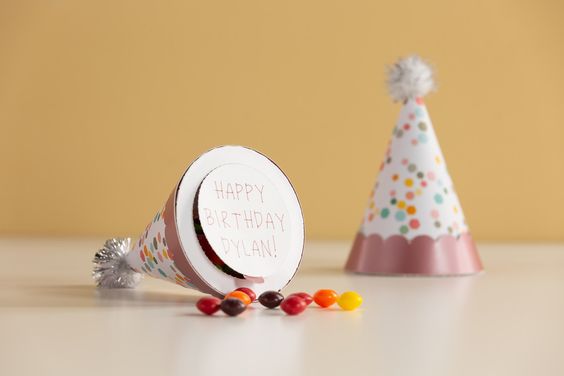
Debossing Tool – What Can I Deboss?
Paper is the most common material to deboss. Additionally, you can also deboss leather! I love to use Cricut’s leather or the Jeereal brand here.
Leather works best with the standard green mat or the fabric mat.

Wavy Edge Tool – What Can You Cut?
The wavy edge tool is very much like the rotary blade in what it can cut. The best choices are crepe paper, cardstock, and fabric, but a subtle wavy design will be added instead of a straight edge. Scroll up to find links for all my crepe paper and fabric resources.
Find this inspiring wavy-edge shadowbox project below in Design Space!
Fabric mats for fabric and light blue mats for cardstock work best with the wavy edge blade materials.
